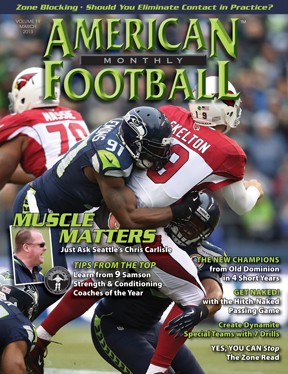AMERICAN FOOTBALL MONTHLY THE #1 RESOURCE FOR FOOTBALL COACHES
|
|
Article Categories
|
Coach to Coach – The Check With Me Passing Seriesby: Bryon HamiltonHead Coach, Foothill High School, Palo Cedro (CA)© More from this issueThere are three passing concepts from our “Check With Me” passing series that have been very successful for me and my quarterbacks. These plays are called by our QBs from the line of scrimmage and they are very effective in attacking coverage schemes.
Here are three Check With Me passing concepts:
1. Check Quick
This “check with me” quick pass concept allows the quarterback to call a specific route combination based primarily on the pre-snap coverage read. This concept is executed form one of our 2 x 2 formations and our empties formation. The quick game routes are designed to have a four-step break point (approximately five yards) by the receivers and a one-step drop for the quarterback (three steps from under center). We want to get the ball out of the quarterbacks hand in less than 1.5 seconds and we....The full article can only be seen by subscribers.
Subscribe today!

|
|
|
NOT A SUBSCRIBER?
Subscribe
now to start receiving our monthly magazine PLUS get INSTANT
unlimited access to over 4000 pages of 100 percent football coaching
information, ONLY available at AmericanFootballMonthly.com!
|
|
|
HOME
|
MAGAZINE
|
SUBSCRIBE
|
ONLINE COLUMNISTS
|
COACHING VIDEOS
|
Copyright 2025, AmericanFootballMonthly.com
All Rights Reserved






